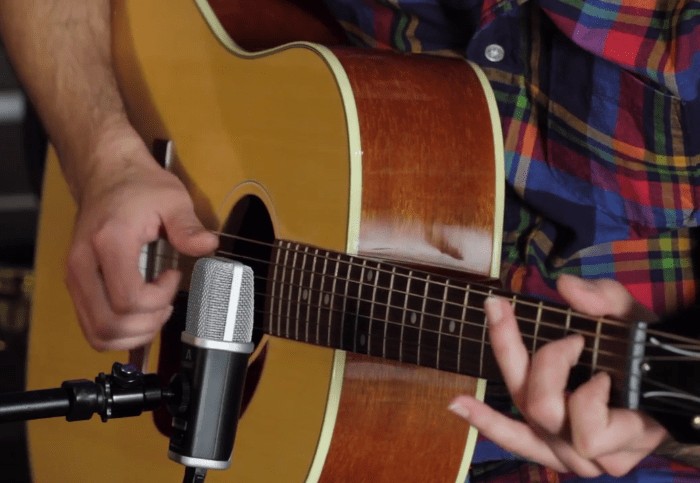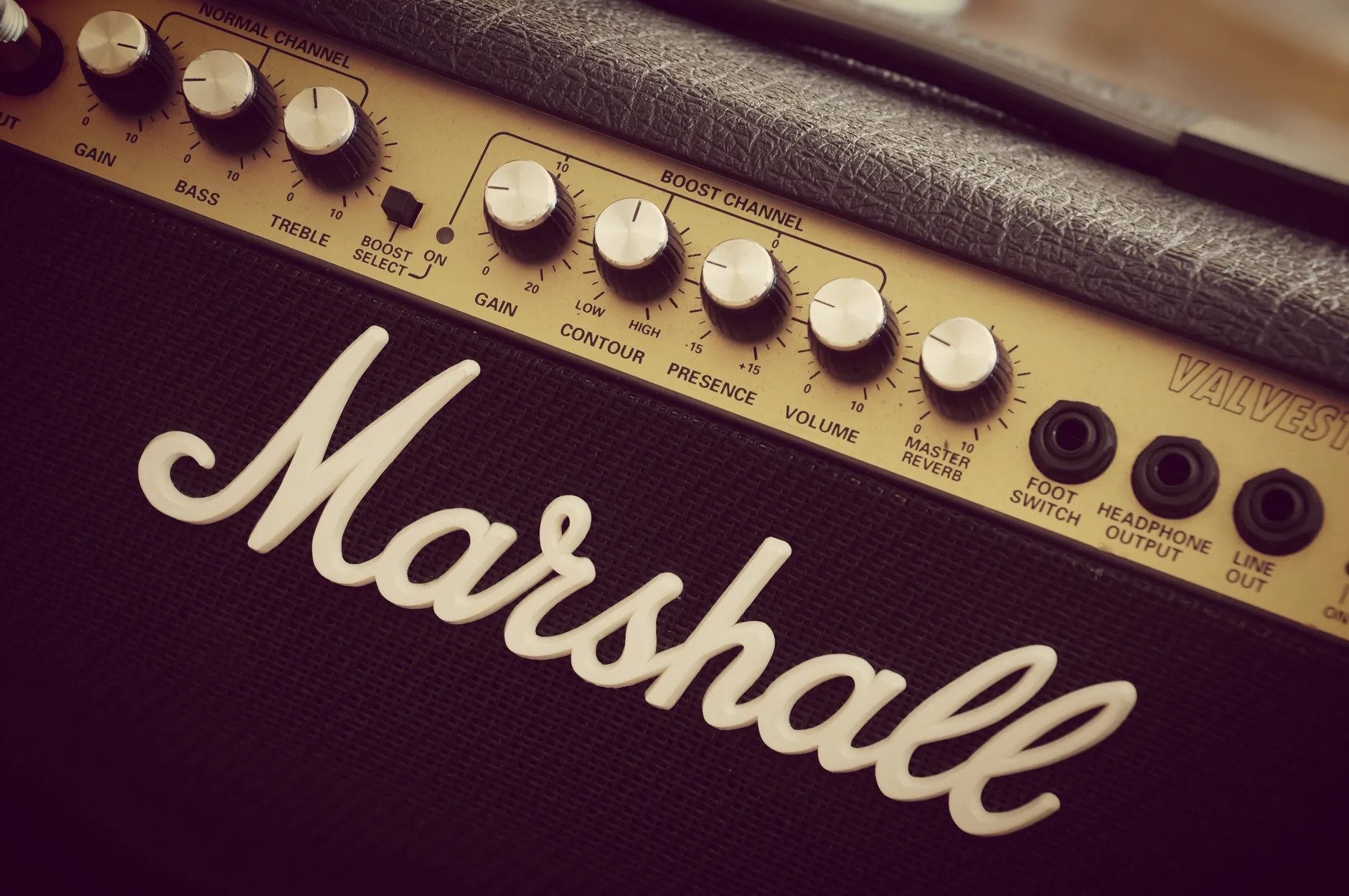Are you pondering, “Can I learn electric guitar before acoustic?” Absolutely! At LEARNS.EDU.VN, we believe your musical journey should begin with the instrument that ignites your passion. Choosing between electric and acoustic guitar as a beginner involves considering their distinct characteristics and how they align with your musical aspirations. This comprehensive guide will explore the pros and cons of each, debunk common myths, and provide actionable insights to help you make the right choice for your guitar-playing adventure. Discover your path to guitar mastery and explore the best learning methods for musical instruments.
1. Debunking Guitar Learning Myths
Before diving into the specifics, let’s address some common misconceptions about learning guitar. Many aspiring guitarists receive well-meaning but ultimately unhelpful advice.
1.1 Myth: Acoustic Guitar First is Mandatory
It’s a frequent suggestion: “Learn on acoustic first, then switch to electric.” The rationale is that acoustic guitars, with their higher string tension and wider necks, build finger strength and dexterity. While there’s some logic to this, it’s not a universal truth.
Why It’s Not Always Necessary:
- Motivation Matters: Starting with the guitar that excites you most is crucial. If you dream of playing electric guitar, begin there.
- Transferable Skills: The fundamental techniques, chord shapes, and music theory learned on either guitar are largely transferable.
- Adjustments, Not Overhaul: Transitioning between electric and acoustic requires adjustments, not a complete relearning. You might need to apply slightly more pressure on acoustic strings or adapt to a wider neck.
Personal Anecdote: Many successful guitarists, including myself, started on electric guitar and later transitioned to acoustic without significant difficulty. The key is to focus on proper technique and consistent practice, regardless of the instrument.
1.2 Myth: Electric Guitar Requires an Amplifier Immediately
While an amplifier enhances the electric guitar experience, it’s not a day-one necessity. Many beginners worry that an electric guitar is inaudible without an amp, but this isn’t true.
The Reality:
- Audible Unplugged: Electric guitars produce enough sound unplugged for practice purposes, especially in quiet environments.
- Delayed Investment: You can purchase an amplifier later, after you’ve developed some basic skills and are ready to explore amplified tones.
- Focus on Fundamentals: Starting unplugged allows you to focus on proper finger placement, strumming technique, and chord changes without the distraction of amplified sound.
Practical Tip: If budget is a concern, prioritize a good quality guitar first and add an amplifier later. Small practice amps are relatively inexpensive and can significantly enhance your playing experience once you’re ready.
1.3 Myth: Classical Guitar is the Best Starting Point
Classical guitars, with their nylon strings, are often recommended for beginners due to their softer feel. However, they are specifically designed for classical and flamenco music.
Why It’s Not Ideal for All:
- Wider Neck: The wider neck can be challenging for beginners with smaller hands.
- Specific Style: Classical guitars are optimized for a particular playing style and repertoire.
- Limited Versatility: If your goal is to play rock, pop, blues, or other contemporary genres, a classical guitar might not be the best choice.
Alternative Approach: If you’re drawn to classical guitar, pursue it! However, if your interests lie in other genres, an electric or steel-string acoustic guitar is a more suitable starting point.
2. Choosing the Right Guitar: Electric vs. Acoustic
The “best” guitar to learn on depends on your musical preferences and goals. Here’s a breakdown of the pros and cons of each type.
2.1 Electric Guitar: Pros and Cons
Pros:
- Easier on Fingers: Lighter gauge strings and lower action (string height) make electric guitars easier to play, especially for beginners. Studies show that the average force needed to fret a note on an electric guitar is significantly less than on an acoustic, reducing finger fatigue.
- Versatile: Electric guitars are incredibly versatile, suitable for a wide range of genres, from rock and blues to jazz and metal. According to a study by the National Association for Music Education, electric guitar is the most popular choice among students interested in contemporary music.
- Lead Guitar Techniques: Electric guitars are ideal for learning lead guitar techniques such as string bending, vibrato, and tapping. The lighter strings make these techniques easier to execute.
- Sound Shaping: Electric guitars offer vast possibilities for sound shaping through amplifiers and effects pedals. This allows you to experiment with different tones and textures, adding depth and creativity to your playing.
- Band-Friendly: Electric guitars are essential for most bands, making them a great choice if you aspire to play with others. A survey by the American Music Conference found that electric guitarists are more likely to participate in group musical activities.
Cons:
- Requires Additional Equipment: You’ll need an amplifier to fully realize the potential of an electric guitar. While you can start unplugged, an amp is necessary for performance and exploring different tones.
- Technique Adjustment: Transitioning to acoustic guitar from electric requires some technique adjustments, particularly in finger strength and hand positioning.
- Weight: Electric guitars can be heavier than acoustic guitars, which may be a consideration for some players.
2.2 Acoustic Guitar: Pros and Cons
Pros:
- Standalone Instrument: Acoustic guitars don’t require amplification, making them convenient for practice and performance in various settings. You can pick one up and play anytime, anywhere.
- Foundation Building: Learning on an acoustic guitar can build finger strength and dexterity, which can be beneficial if you later switch to electric.
- Fingerstyle Friendly: Acoustic guitars are well-suited for fingerstyle playing, a technique that involves plucking individual strings with your fingers rather than using a pick.
- Social Setting: Acoustic guitars are perfect for playing songs in gatherings with friends, such as at barbeques or around a campfire.
Cons:
- Harder on Fingers: Higher string tension and action can make acoustic guitars more challenging to play, especially for beginners. This can lead to finger fatigue and discouragement.
- Limited Lead Guitar Techniques: Acoustic guitars are not as well-suited for some lead guitar techniques, such as string bending, due to the higher string tension.
- Band Limitations: If you plan to join a band, you’ll likely need an electric guitar to be heard properly.
- Potential Discouragement: The difficulty of playing an acoustic guitar can be off-putting for some beginners, leading to frustration and a higher dropout rate.
Comparative Table: Electric vs. Acoustic Guitar
| Feature | Electric Guitar | Acoustic Guitar |
|---|---|---|
| String Tension | Lower, easier on fingers | Higher, requires more finger strength |
| Amplification | Required for full sound | Not required |
| Versatility | Wide range of genres | More suited to folk, country, and singer-songwriter |
| Lead Techniques | Ideal for string bending, tapping, etc. | Limited string bending capabilities |
| Fingerstyle | Possible, but not as common | Well-suited for fingerstyle playing |
| Portability | Requires amp for full portability | Highly portable |
| Initial Cost | Can be higher due to amp requirement | Can be lower, but quality varies |
| Learning Curve | Generally easier for beginners | Can be more challenging initially |
| Common Genres | Rock, blues, jazz, metal | Folk, country, pop |
| String Bending | Easier to execute | More difficult |
| Neck Width | Typically narrower | Typically wider |
| Sound Customization | Highly customizable with effects | Limited sound customization |
3. The Importance of Inspiration
Ultimately, the best guitar to learn on is the one that inspires you to play. If you’re passionate about electric guitar, you’re more likely to practice consistently and overcome challenges.
3.1 Following Your Musical Heroes
Do you dream of shredding like Jimi Hendrix, crafting soaring solos like David Gilmour, or creating intricate soundscapes like Brian May? If so, an electric guitar is the obvious choice.
3.2 Embracing the Singer-Songwriter Tradition
Are you drawn to the intimate storytelling of Ed Sheeran, the timeless folk of Bob Dylan, or the catchy melodies of Taylor Swift? An acoustic guitar might be a better fit.
3.3 Combining Influences
Many guitarists draw inspiration from both electric and acoustic players. There’s no rule that says you have to choose one over the other. You can always start with one type of guitar and add the other to your collection later.
4. Practical Tips for Beginners
No matter which type of guitar you choose, here are some tips to help you get started on the right foot.
4.1 Choosing the Right Guitar Size
Guitar size is crucial for comfort and playability, especially for younger learners. Guitars come in various sizes, including:
- 1/4 Size: Suitable for children aged 5-7.
- 1/2 Size: Suitable for children aged 8-10.
- 3/4 Size: Suitable for children aged 11-13 or adults with smaller frames.
- Full Size: Suitable for teenagers and adults.
Recommendation: Visit a local guitar store and try out different sizes to see what feels most comfortable.
4.2 Setting Up Your Guitar
A properly set-up guitar is easier to play and sounds better. This includes:
- String Height (Action): Lower action makes the strings easier to press down.
- Intonation: Proper intonation ensures that the guitar plays in tune across the entire fretboard.
- String Gauge: Lighter gauge strings are easier on the fingers, especially for beginners.
Professional Setup: Consider having a professional guitar technician set up your guitar. This is a worthwhile investment that can significantly improve your playing experience. The average cost of a guitar setup ranges from $50 to $100, according to Guitar Center.
4.3 Learning Resources
Numerous resources are available to help you learn guitar, including:
- Online Lessons: Websites like LEARNS.EDU.VN, YouTube, and TrueFire offer a wealth of guitar lessons for all levels.
- Private Teachers: A private teacher can provide personalized instruction and feedback.
- Guitar Books: Many excellent guitar books cover topics such as chords, scales, and music theory.
LEARNS.EDU.VN Advantage: At LEARNS.EDU.VN, we offer structured guitar courses designed to take you from beginner to advanced. Our lessons are taught by experienced instructors and cover a wide range of styles and techniques.
4.4 Practicing Regularly
Consistent practice is essential for progress. Aim for at least 20-30 minutes of practice each day.
Effective Practice Techniques:
- Warm-up: Start with simple exercises to warm up your fingers and wrists.
- Focus: Concentrate on specific skills or techniques during each practice session.
- Repetition: Repeat exercises and passages until you can play them smoothly and accurately.
- Breaks: Take short breaks to avoid fatigue and maintain focus.
- Enjoyment: Choose songs and exercises that you enjoy playing.
4.5 Joining a Community
Connecting with other guitarists can provide support, motivation, and inspiration.
Ways to Connect:
- Online Forums: Websites like Reddit and GuitarTricks have active guitar communities.
- Local Music Stores: Many music stores host jam sessions and workshops.
- Open Mic Nights: Performing at open mic nights can help you gain experience and connect with other musicians.
- Social Media Groups: Join guitar-related groups on Facebook, Instagram, and other social media platforms.
5. Further Advice on Guitar Buying
Investing in a good quality instrument is crucial for long-term enjoyment and progress.
5.1 Budget Considerations
Set a budget before you start shopping for a guitar. Remember to factor in the cost of accessories such as a case, tuner, and picks.
Quality vs. Price:
As a general rule, the higher the price range, the better the quality of the instrument. However, you don’t need to spend a fortune to get a decent beginner guitar.
Recommended Budget: For a beginner electric guitar, aim to spend at least $200-$300. For an acoustic guitar, aim for at least $150-$250.
5.2 Trying Before You Buy
If possible, visit a local guitar store and try out different guitars before you make a purchase. This will allow you to get a feel for the instrument and see what sounds and plays best for you.
Key Factors to Consider:
- Comfort: Does the guitar feel comfortable in your hands?
- Sound: Do you like the sound of the guitar?
- Playability: Is the guitar easy to play?
- Aesthetics: Do you like the way the guitar looks?
5.3 Seeking Expert Advice
Don’t hesitate to ask for advice from experienced guitarists or music store employees. They can help you choose the right guitar for your needs and budget.
Questions to Ask:
- What are the best beginner guitars in my price range?
- What are the key features I should look for in a guitar?
- Can you help me set up the guitar properly?
6. The Benefits of Professional Guitar Lessons
While self-study can be effective, professional guitar lessons offer several advantages.
6.1 Personalized Instruction
A good teacher can assess your strengths and weaknesses and tailor lessons to your specific needs and goals.
Customized Learning Plans: Teachers can create a customized learning plan that takes into account your musical preferences, learning style, and pace.
6.2 Proper Technique
A teacher can help you develop proper technique from the start, preventing bad habits that can be difficult to break later on.
Preventing Injuries: Proper technique can also help prevent injuries such as carpal tunnel syndrome and tendonitis.
6.3 Motivation and Accountability
A teacher can provide motivation and accountability, helping you stay on track and achieve your goals.
Regular Feedback: Regular feedback from a teacher can help you identify areas for improvement and stay motivated.
6.4 Structured Learning
A teacher can provide a structured learning environment, ensuring that you cover all the essential topics and skills.
Comprehensive Curriculum: Teachers typically follow a comprehensive curriculum that covers topics such as chords, scales, music theory, and improvisation.
LEARNS.EDU.VN Expertise: At LEARNS.EDU.VN, our instructors are experienced professionals who are passionate about teaching guitar. We offer both online and in-person lessons to suit your needs.
7. Embrace the Journey
Learning guitar is a journey, not a destination. There will be challenges along the way, but the rewards are well worth the effort.
7.1 Patience and Persistence
Be patient with yourself and don’t get discouraged if you don’t see results immediately. It takes time and effort to develop guitar skills.
Realistic Expectations: Set realistic expectations for your progress. It’s normal to feel frustrated at times, but don’t give up!
7.2 Celebrate Small Victories
Acknowledge and celebrate your progress, no matter how small. This will help you stay motivated and build confidence.
Tracking Progress: Keep a journal to track your progress and celebrate your achievements.
7.3 Have Fun
Most importantly, have fun! Learning guitar should be an enjoyable experience. Choose songs and exercises that you enjoy playing and don’t be afraid to experiment and explore.
Making Music: Remember that the ultimate goal is to make music. Don’t get too bogged down in theory and technique. Focus on expressing yourself through your playing.
8. Case Studies: Electric First vs. Acoustic First
Let’s explore some real-world examples of guitarists who started with either electric or acoustic guitar.
8.1 Case Study 1: Sarah’s Electric Start
Sarah always dreamed of playing in a rock band. She started with an electric guitar and quickly learned basic chords and riffs. She enjoyed the versatility of the electric guitar and the ability to experiment with different tones and effects. After a few years, she decided to try acoustic guitar. She found that her finger strength and dexterity were already well-developed, making the transition relatively easy. She now plays both electric and acoustic guitar and performs regularly in a local band.
8.2 Case Study 2: Michael’s Acoustic Foundation
Michael was drawn to the singer-songwriter tradition. He started with an acoustic guitar and learned fingerstyle techniques and chord progressions. He enjoyed the simplicity and portability of the acoustic guitar. After several years, he decided to try electric guitar. He found that his knowledge of chords and music theory transferred easily, but he had to adjust his technique to the lighter strings and narrower neck. He now plays both electric and acoustic guitar and writes his own songs.
8.3 Key Takeaways
These case studies illustrate that there’s no single “right” way to start learning guitar. The key is to choose the instrument that inspires you and to be persistent in your practice.
9. The Role of Technology in Guitar Learning
Technology has revolutionized the way we learn guitar. Numerous apps, websites, and software programs are available to help you improve your skills.
9.1 Guitar Learning Apps
Apps like Yousician, GuitarTricks, and Fender Play offer interactive lessons, chord diagrams, and song tutorials.
Benefits of Guitar Learning Apps:
- Convenience: Learn anytime, anywhere.
- Interactive: Engage with interactive lessons and exercises.
- Personalized: Receive personalized feedback and track your progress.
- Gamification: Make learning fun with gamified elements.
9.2 Online Guitar Courses
Websites like LEARNS.EDU.VN offer structured guitar courses taught by experienced instructors.
Advantages of Online Guitar Courses:
- Comprehensive Curriculum: Cover all the essential topics and skills.
- Expert Instruction: Learn from experienced professionals.
- Community Support: Connect with other students and instructors.
- Flexibility: Learn at your own pace.
9.3 Guitar Tab Software
Software programs like Guitar Pro and TuxGuitar allow you to view, edit, and create guitar tablature.
Uses of Guitar Tab Software:
- Learning Songs: View tablature for your favorite songs.
- Transcribing Music: Transcribe music from recordings.
- Creating Tabs: Create your own guitar tabs.
- Practicing Rhythms: Practice playing along with a metronome.
10. FAQs: Learning Electric and Acoustic Guitar
1. Is it harder to learn electric or acoustic guitar?
Acoustic guitars are generally considered harder to learn initially due to higher string tension and wider necks, requiring more finger strength. Electric guitars have lighter strings and narrower necks, making them easier on the fingers.
2. Can I learn guitar by myself?
Yes, you can learn guitar by yourself using online resources, books, and apps. However, professional lessons can provide personalized instruction and feedback.
3. How long does it take to learn guitar?
It depends on your goals and how much you practice. You can learn basic chords and songs in a few months, but mastering the instrument takes years of dedication.
4. What’s the best age to start learning guitar?
There’s no “best” age. Children as young as 5 can start with smaller-sized guitars. Adults can start at any age.
5. Do I need to know music theory to play guitar?
No, but learning music theory can enhance your understanding of music and improve your playing.
6. What are the essential accessories for guitar?
Essential accessories include a case, tuner, picks, strap (for electric guitar), and amplifier (for electric guitar).
7. How often should I change my guitar strings?
Change your strings every 1-3 months, depending on how often you play.
8. How do I tune my guitar?
You can use a tuner app, online tuner, or a traditional electronic tuner.
9. How do I care for my guitar?
Keep your guitar clean and dry. Store it in a case when not in use. Adjust the humidity if necessary.
10. Where can I find guitar lessons near me?
Check local music stores, community centers, and online directories. You can also find online lessons at LEARNS.EDU.VN.
Conclusion: Your Guitar Journey Awaits
Whether you choose to start with an electric or acoustic guitar, the most important thing is to follow your passion and enjoy the journey. Remember to practice consistently, seek out learning resources, and connect with other guitarists. At LEARNS.EDU.VN, we’re here to support you every step of the way.
Ready to start your guitar adventure? Visit LEARNS.EDU.VN today to explore our comprehensive guitar courses and unlock your musical potential!
Contact Us:
- Address: 123 Education Way, Learnville, CA 90210, United States
- WhatsApp: +1 555-555-1212
- Website: learns.edu.vn
Let the music begin!




